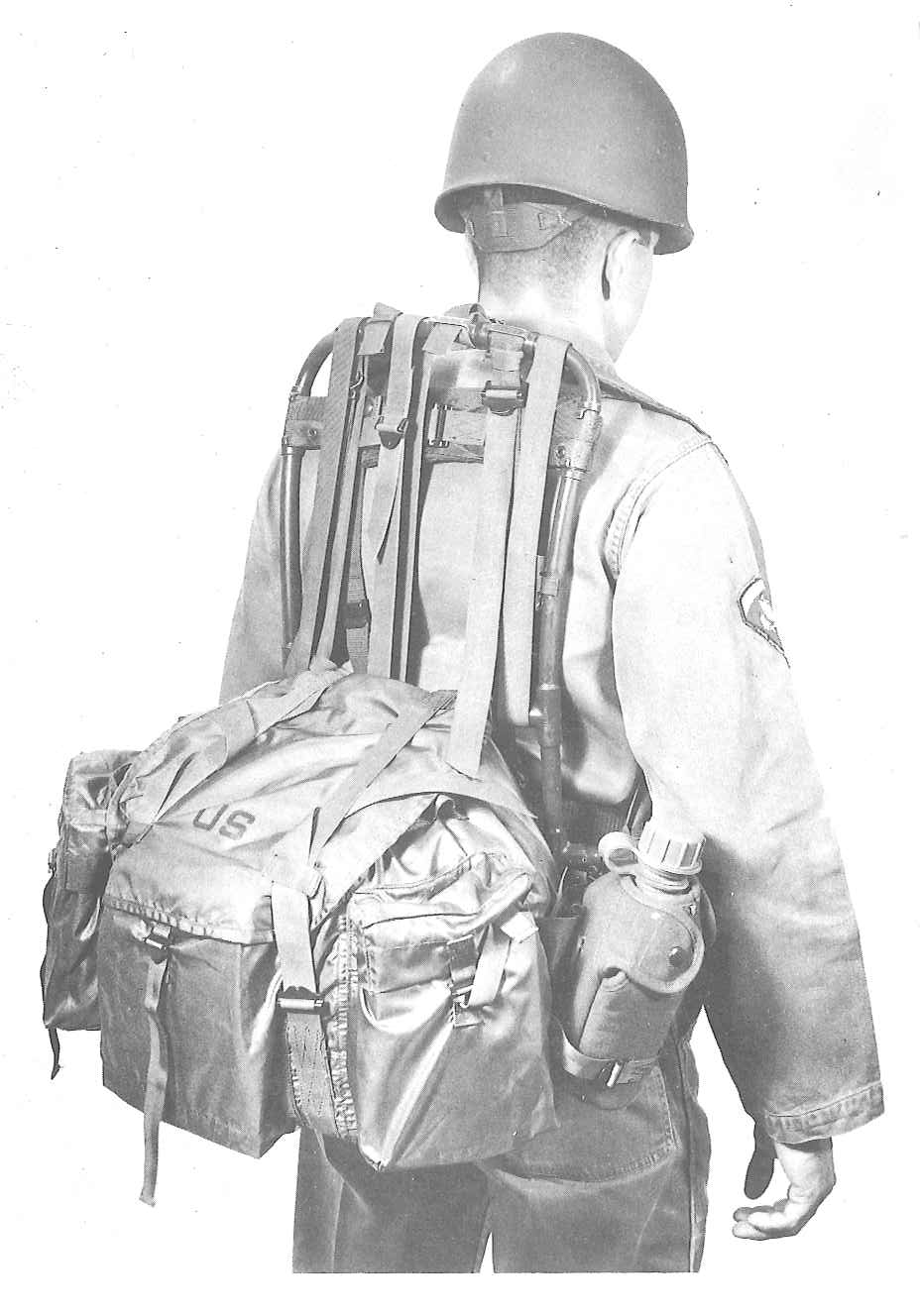Lightweight Rucksack
The lightweight rucksack with aluminum frame was developed by Natick Laboratories for cold weather and mountain use as an initial effort to develop lightweight load-carrylng equipment in 1961. It weighed 3 pounds (1.4 kg) as compared to the 7.5 pound (3.4 kg) cotton rucksack with steel frame which it replaced.[1]

The aluminum frame gave the load stability on the wearer's back, and the nylon pack, with a capacity of 1.15 cubic feet was almost twice as large as the M-56 pack (.67 cu ft). Furthermore, a small demountable platform was provided which could be attached at the bottom of the frame; this shelf made it possible to carry items like a five-gallon water can, and thus served as a lightweight packboard.
Specification
- MIL-R-43373
- frame and cargo support shelf: MIL-F-43356
- snow camouflage cover: MIL-C-41823
- rifle butt pocket and strap assembly: MIL-R-43323
Nomenclature
- complete set: RUCKSACK, LIGHTWEIGHT
- pack: FIELD PACK
- frame: FRAME, FIELD PACK
- waist strap: STRAP, WEBBING
Logistics
- standardized model, complete set: 8465-782-3248
- pack: 8465-782-2113
- riveted frame: 8465-782-3249
- waist strap: 8465-782-3250
- shelf: 8465-782-6722
- snow camouflage cover: 8465-270-0414
- rifle butt pocket and strap assembly: 8465-782-2779
- earlier models
- T-62-1
- T-62-2: 8465-889-3773
- 1964: 8465-965-4416
References
- Metzger, Eldon C. (July 1975). History of the Development of the LINCLOE Loadcarrying Equipment. Natick, MA: United States Army Natick Development Center. [pdf]
- Kennedy, Stepehen; Goldman, Ralph; Slauta, John. (May 1973). The Carrying of Loads within an Infantry Company. Natick,MA: Clothing and Personal Life Support Equipment Laboratory, US Army Natick Laboratories. [pdf]
- Rottman, Gordon L. (January 26, 2017). Vietnam War US & Allied Combat Equipments. Oxford, UK: Osprey Publishing.
- Monroe, C. A., Pickrall, Craig. (2012). American Web Equipment 1967-1991. Marlborough, Wiltshire, UK: The Crowood Press.
Notes
- ↑ M-1952 rucksack, MIL-R-1619A

